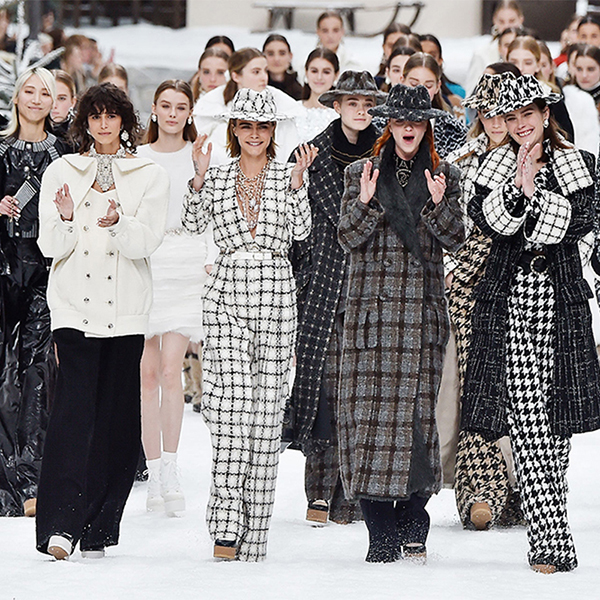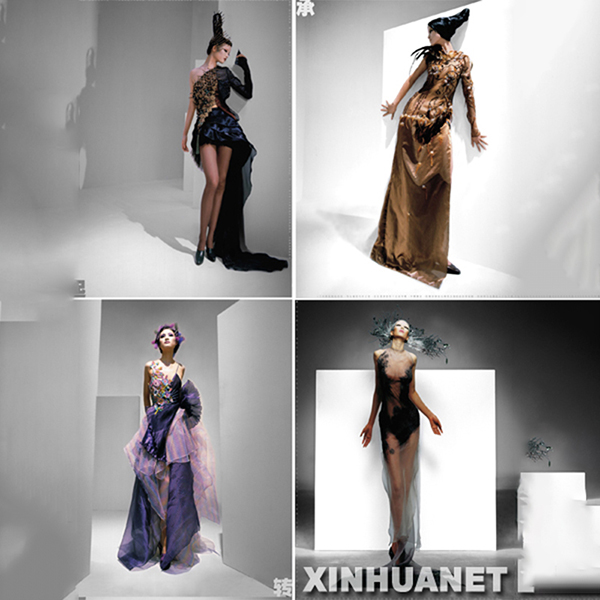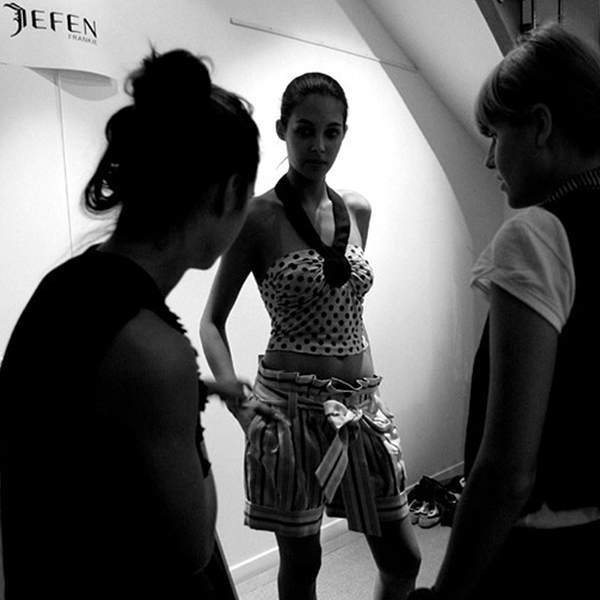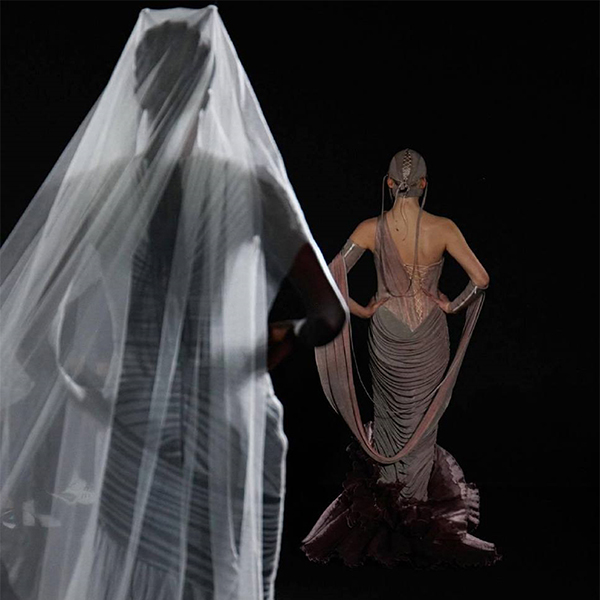Many people think that the profession of "Chinese fashion designer" only started 10 years ago. That is, in the past 10 years, they have gradually moved to the "Big Four" fashion weeks. In fact, it can be said that it took nearly 40 years for Chinese fashion designto enter the "Big Four" fashion weeks.
First of all, let me give you a historical update (the sharing here is mainly from my book "Chinese Fashion: Conversations with Chinese Fashion Designers"). The book is still available online.)
1. Background knowledge
Let's start with China's reform and opening up era in the 1980s. Let me give you some background.
(1) Fashion models
In 1986, Chinese model Shi Kai participated in an international modeling competition in his private capacity. This is the first time that a Chinese model has participated in an international competition and won a "special award".
In 1989, Shanghai held the first model competition of New China - "Schindler Cup" model competition.
(2) Fashion magazines
In 1980, China's first fashion magazine Fashion was launched. However, the content was still dominated by cutting and sewing techniques.
In 1988, ELLE magazine became the first international fashion magazine to land in China.
(3)Clothing trade show
In 1981, the "New Haoxing Clothing Exhibition" was held in Beijing, which was the first clothing exhibition held in China after the reform and opening up.
In 1986, New China's first fashion trend conference was held in the Great Hall of the People in Beijing.
In 1988, Dalian held the first fashion festival in New China. At that time, it was called "Dalian Fashion Festival", and later changed its name to "Dalian International Fashion Festival".
(4) Trade associations
Beijing Garment and Textile Industry Association was established in October 1984, which was the first garment industry association in China after the reform and opening up.
(5) Fashion design competition
In 1986, China Fashion Magazine held the first national "Golden Scissors Award" costume design competition, which was the first large-scale professional costume design competition held in an official manner in China.
(6) Overseas exchanges
In September 1985, China participated in the 50th International Women's Wear Exhibition in Paris, which was the first time after the reform and opening up that China sent a delegation to participate in an overseas clothing trade exhibition.
In September 1987, Chen Shanhua, a young designer from Shanghai, represented China for the first time on the international stage to show the world the style of Chinese fashion designers in Paris.
(7)Clothing education
In 1980, the Central Academy of Arts and Crafts (now the Academy of Fine Arts of Tsinghua University) opened a three-year fashion design course.
In 1982, a bachelor's degree program in the same specialty was added.
In 1988, the first national clothing science, engineering, art as the main body of new clothing education institutions of higher learning - Beijing Institute of Fashion Technology was established in Beijing. Its predecessor was Beijing Textile Institute of Technology, founded in 1959.
2. A brief history of Chinese fashion designers heading for the "Big Four" fashion weeks
For the brief history of Chinese fashion design entering the four major fashion weeks, I will divide it into three stages.
The first stage:
Chinese designers go abroad in the name of cultural exchange
Because space is limited, here are just a few representative characters.

(1) Chen Shanhua
In September 1987, Shanghai designer Chen Shanhua represented China (mainland) in Paris for the first time to show the world the style of Chinese fashion designers on the international stage.
Here I quote the speech of Tan An, vice president of the Textile and Garment Chamber of Commerce of the All-China Federation of Industry and Commerce, who shared this history as a predecessor:
"On September 17, 1987, at the invitation of the French Women's Wear Association, the Chinese garment industry delegation participated in the second Paris International Fashion Festival, selected eight models from the Shanghai fashion show team, and hired 12 French models to form the Chinese fashion show team to show the red and black series of Chinese fashion by the young Shanghai designer Chen Shanhua." The fashion festival stage is set up in a garden beside the Eiffel Tower in Paris and on the banks of the Seine, where the musical fountain, the fire tree and the silver flowers shine together, just like a fairyland. It is by far the most spectacular fashion festival ever held in the world. It was also on this grand international stage performed by 980 models that the Chinese costume performance team won the honor and was specially arranged by the organizer for a separate curtain call. The debut of the Chinese fashion, caused a huge sensation, the media have spread from Paris to the world, "Figaro" commented: the red and black dress is the Chinese girl from Shanghai, they beat the long dress but not magnificent German performance team, but also beat the Japanese performance team wearing short skirts. The organizer said: China is the "number one news country" among the 18 countries and regions participating in the Fashion festival "(This paragraph is quoted from Mr. Tan 'an speech)
(2) Wang Xinyuan
Speaking of cultural exchange, I have to say Wang Xinyuan, who is arguably one of the most popular fashion designers in China in the 1980s. When Pierre Cardin came to China in 1986 to shoot, to meet with Chinese fashion designers, they took this photo, so we actually started with cultural exchange.
In 1987, Wang Xinyuan went to Hong Kong to participate in the second Hong Kong Youth Fashion Design Competition and won the silver award in the dress category. The news was exciting at the time.
It is worth mentioning that in 2000, Wang Xinyuan released a show on the Great Wall of China. Fendi didn't show on the Great Wall until 2007.
(3) Wu Haiyan
Speaking of this, I think teacher Wu Haiyan is very worthy of writing. Ms. Wu Haiyan represented Chinese designers abroad many times.

In 1995, he exhibited his works at CPD in Dusseldorf, Germany.
In 1996, she was invited to show her works at Tokyo Fashion Week in Japan.
In 1999, he was invited to Paris to participate in the "Sino-French Culture Week" and perform his works.
In 2000, he was invited to New York to participate in the "Sino-US Cultural Week" and perform his works.
In 2003, he was invited to display his work in the window of Gallery Lafaye, a luxury shopping mall in Paris.
In 2004, he was invited to Paris to participate in the "Sino-French Cultural Week" and released the "Oriental Impression" fashion show.
A lot of their work doesn't look out of date today.
Stage 2: Breaking milestones
(1) Xie Feng

The first milestone was broken in 2006 by designer Xie Feng.
Xie Feng is the first designer from the Chinese mainland to enter the "Big Four" fashion week.
The 2007 Spring/summer show of Paris Fashion Week (held in October 2006) selected Xie Feng as the first fashion designer from China (mainland) and the first fashion designer to appear at the fashion week. This is also the first Chinese (mainland) fashion designer to be officially invited to show at the four major international fashion weeks (London, Paris, Milan and New York) - all previous Chinese (mainland) fashion designers' overseas fashion shows have focused on cultural exchange. Xie Feng's participation in Paris Fashion Week marks the beginning of the integration of Chinese (mainland) fashion designers into the international fashion business system, and Chinese fashion products are no longer "just for viewing" cultural products, but can share the same share in the international market with many international brands.
(2) Marco
Next, let me introduce you to Marco.
Ma Ke is the first Chinese (mainland) fashion designer to enter the Paris Haute Couture Fashion Week
Her performance at Paris Haute Couture Week was completely off-stage. Generally speaking, Marco is a person who likes to innovate. She does not like to repeat herself or others. So she didn't take the traditional runway form at that time, her clothing show was more like a stage show. And the models she looks for are not professional models, but actors who are good at action, such as dancers.
The third stage: Chinese designers gradually flock to the "Big Four" fashion weeks

After 2010, the number of Chinese (mainland) designers entering the "four major" fashion weeks has gradually increased. Since there are more relevant information on the Internet at this time, I will mention a brand, UMA WANG. I think she is by far the most commercially successful Chinese (mainland) designer in the international market. In terms of influence, as well as the actual number of stores opened and entered, she has been quite successful so far.
There is no doubt that more Chinese designer brands will appear in the global market in the future!
Post time: Jun-29-2024






